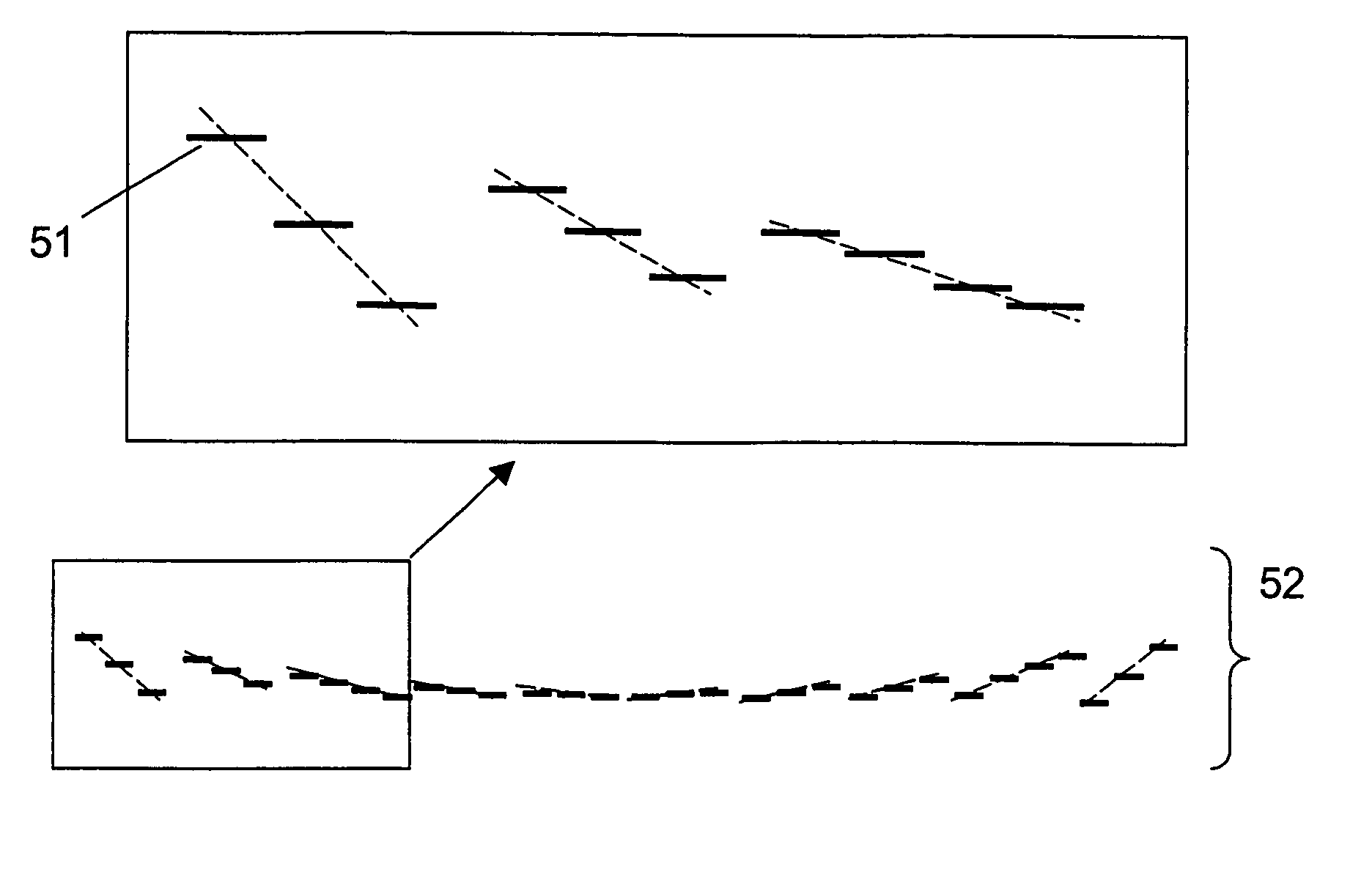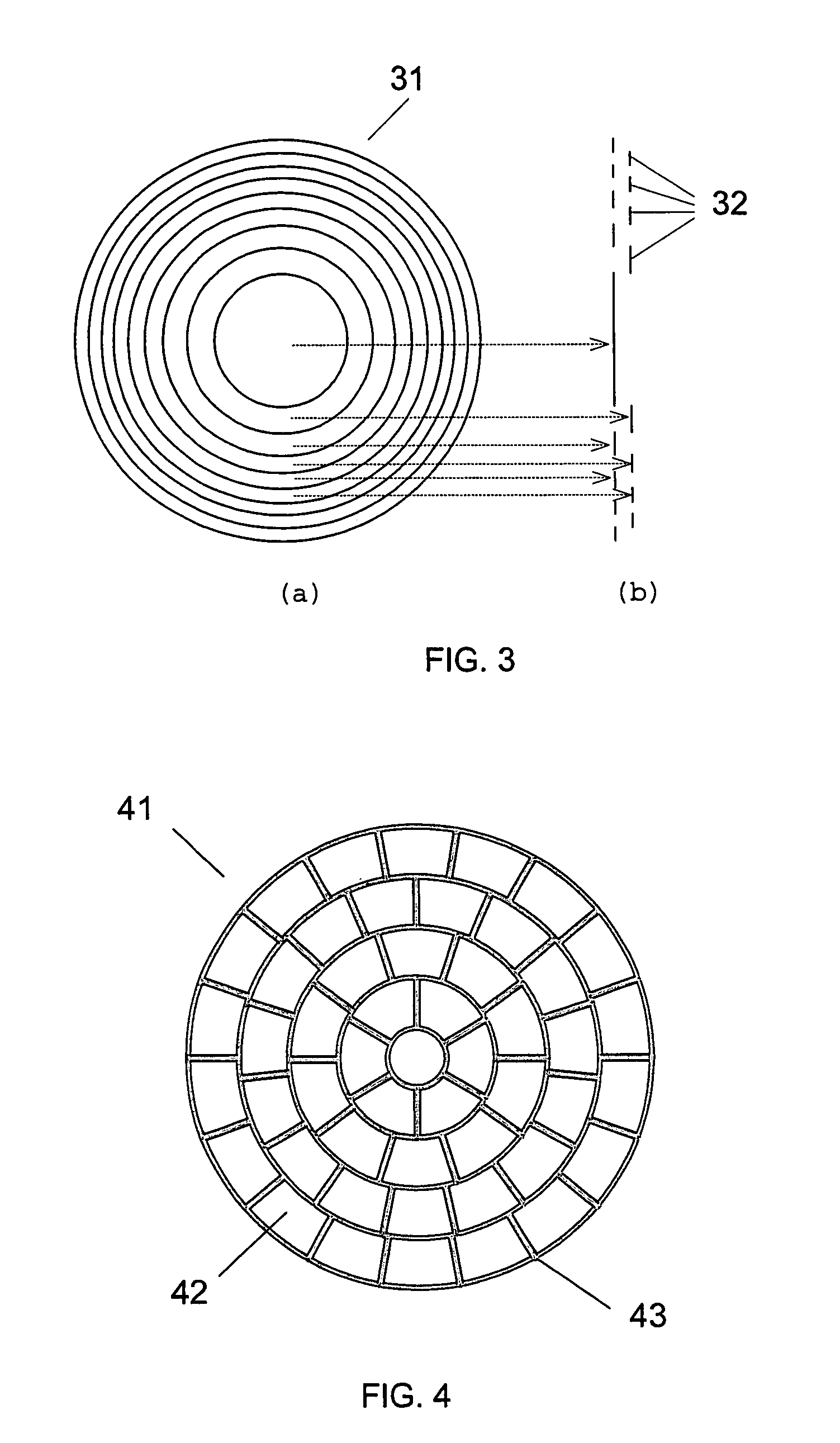Variable focal length lens comprising micromirrors with one degree of freedom translation
a variable focal length and micro-mirror technology, applied in the field of variable focal length lenses comprising micro-mirrors, can solve the problems of complex driving mechanisms to control the relative positions of refractive lenses, slow response time, low focusing efficiency, etc., to achieve simple mechanical structures and actuating components, increase the effective reflective area, and reduce the effect of aberration
- Summary
- Abstract
- Description
- Claims
- Application Information
AI Technical Summary
Benefits of technology
Problems solved by technology
Method used
Image
Examples
Embodiment Construction
[0037]FIG. 1 shows zone plates. Gray regions (zones) 11 are the area where lights are blocked. In FIG. 1 (a), the left plate, light blocked at even zones and in FIG. 1 (b), the right plate, lights are blocked at odd zones. But two plate have same focus and intensity. Every zone have the same area and optical path length (OPL) difference between from every adjacent zones to focal point is half wavelength. Focal length is changed by changing the width of zone.
[0038]FIG. 2 illustrates the principle of the conventional micromirror array lens. There are two conditions to make a perfect lens. The first is the converging condition that all light scattered by one point of an object should converge into one point of the image plane. The second is the same phase condition that all converging light should have the same phase at the image plane.
[0039]A micromirror array arranged in flat plane can satisfy two conditions to be a lens. Each of the micromirrors rotates to converge the scattered lig...
PUM
 Login to View More
Login to View More Abstract
Description
Claims
Application Information
 Login to View More
Login to View More - R&D
- Intellectual Property
- Life Sciences
- Materials
- Tech Scout
- Unparalleled Data Quality
- Higher Quality Content
- 60% Fewer Hallucinations
Browse by: Latest US Patents, China's latest patents, Technical Efficacy Thesaurus, Application Domain, Technology Topic, Popular Technical Reports.
© 2025 PatSnap. All rights reserved.Legal|Privacy policy|Modern Slavery Act Transparency Statement|Sitemap|About US| Contact US: help@patsnap.com



